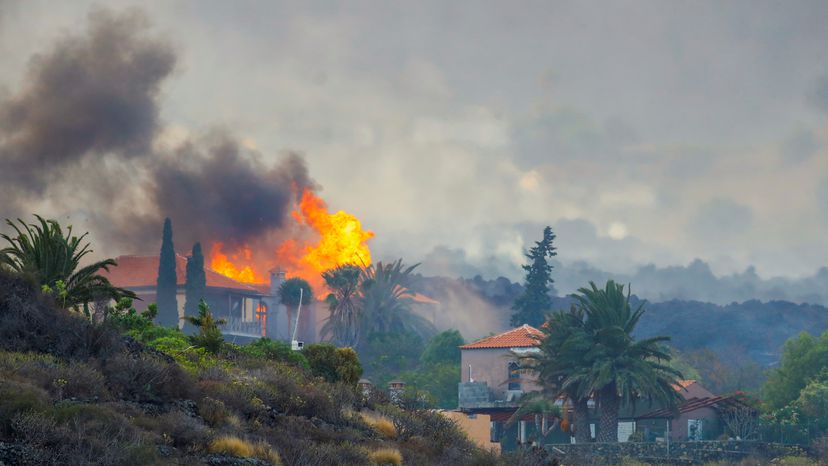The Eruption of La Cumbre Vieja in The Canary Islands
September 26, 2021
On Sunday, September 19, 2021, on the Spanish island of La Palma, the Cumbre Vieja volcano that had been dormant for 50 years erupted. By Wednesday, September 22, orange tides of lava were still flowing down the volcano, creating mass panic and wreaking havoc upon the small island’s community.
Since the initial spew of lava, it has run continuously in three tongues towards the coast, destroying everything in its path. Thousands have been forced to evacuate homes, schools, hospitals, and gathering spots, many of which have been incinerated or razed to the ground. As families escape with their valuables and farmers rush to collect what is salvagable of their crops, officials are working to make sure property damage is the only casualty that emerges from this event. Many officials are warning of toxic explosions of carbon dioxide and sulfur dioxide from the caldera, the hollowed out hole on top of the volcano. These noxious gasses are dangerous to human and animal respiratory systems, the atmosphere, and vegetation. It is close to impossible to rid the air of volcanic gases; people exposed to them can fight their effects by blocking ventilation openings, sealing doors and windows, or simply leaving the area. As for vegetation and the atmosphere, all Spaniards can do is support the communities devastated by the impact through all stages of clean up and rebuilding.
Though nothing is confirmed, the effects of this volcano may cause long term economic, agricultural, and health struggles. For example, the island’s main source of income is agriculture, banana plantations being the most prominent. 6,000 to 8,000 tons of bananas are shipped from the island weekly to the Spanish mainland and all across Europe from over 3,000 hectares (7,413 acres) of banana crops. The continuous waves of lava from the la Cumbre Vieja are a devastating threat to local communities. Additionally, the irrigation systems that support agriculture around the island are in danger, meaning even if all crops were lost, it would take thousands of dollars to rebuild the piping for farmers to restart their plantations. This would greatly affect the economic status of the island as well as the lives of its many farming citizens, setting back the re-establishment of their previously thriving farms.
Many farmers are outraged by the way Spanish Tourism officials are reacting to the eruption: advertising “volcano tourism.” In an interview with ABC News, 70-year-old farmer José Alegría expressed his frustration. “This is no joke… the volcano may not kill us directly, but it’s going to make a lot of us go bankrupt,” he began. When asked his opinions of Spanish Tourism Minister Reyes Maroto’s support of volcano tourism, he questioned, “Can the minister tell me who is this good for? It might be for visitors and for those who own the hotels.”
Citizens of La Palma are currently experiencing the most disruptive natural disaster since 1971. However, among the remnants of former residences in a landscape of charred and smoldering ash, a singular house stands tall. Somehow the island’s “miracle home” avoided the effects of the devastation. Aerial view images were able to capture the anomaly, perched — unsullied and unscathed — on a small patch of barren grass. The owners, a retired Danish couple who have not visited La Palma since the start of the pandemic, still have a place to hang their hats when they return; however, they will have to travel a long way to find the nearest neighbor.
The effects of the volcanic eruption will inevitably last several months and possibly even longer. With the constant background noise of the rumbling volcano and the singed vegetation, the island is in total disarray. One way people are proactively assisting in the rebuilding of the island’s society and agriculture is through donations. Multiple organizations have collected funds to donate to the victims of la Cumbre Vieja in what Canary News is calling a “tsunami of hope.” Unfortunately, donations are coming directly from people in and around the island, and venues for helping are not yet open online; however, as soon as they are available, the Briar Woods Falcon Flyer will attach a link for your convenience.


